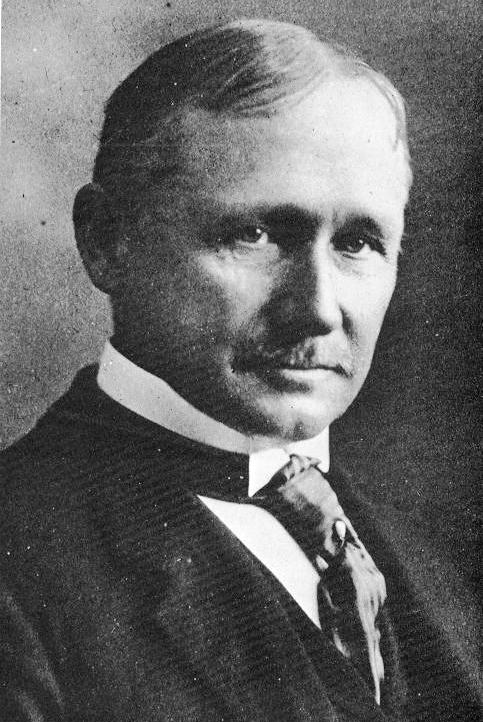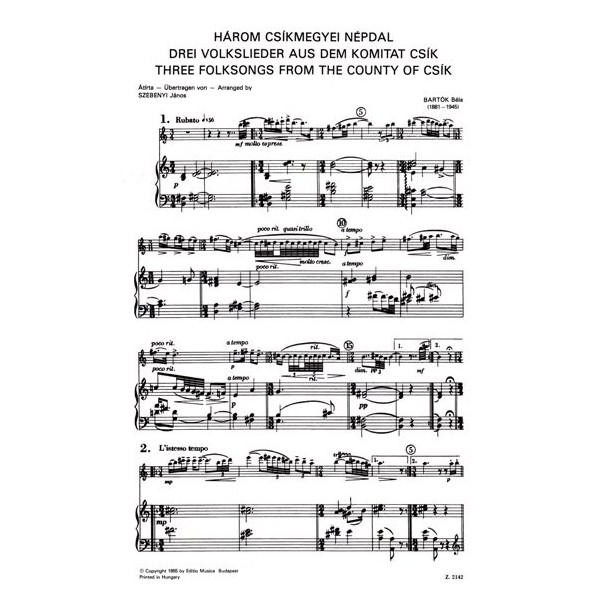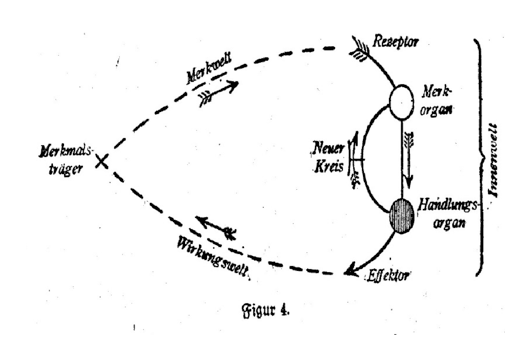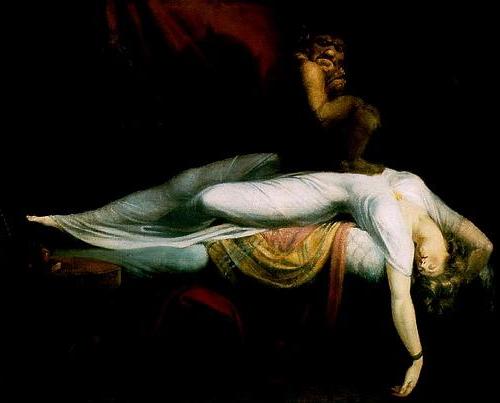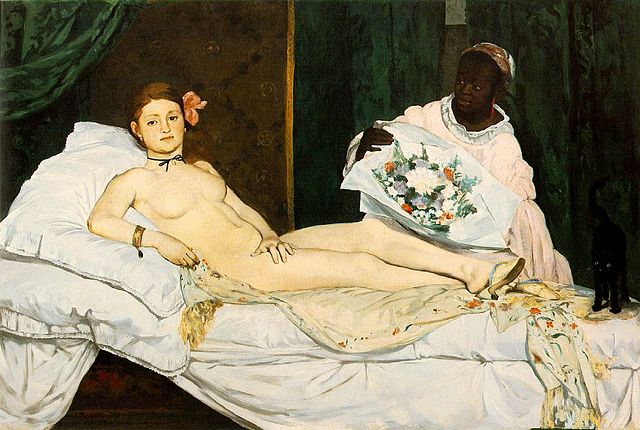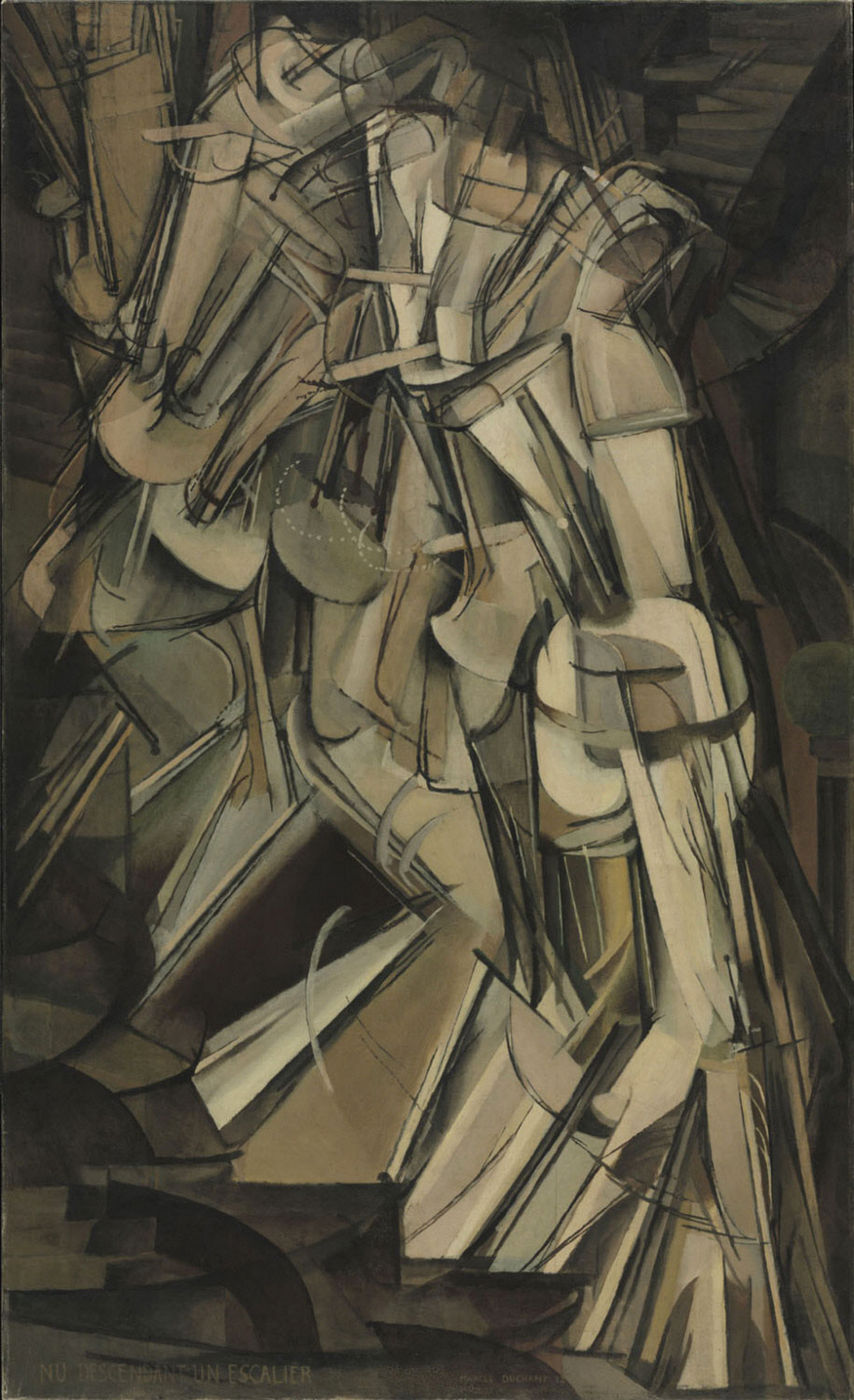
01 Mar 新技术、新媒体、新艺术讲座第一场讲稿完整版 | 讲座时间地点调整
The Proletarianization of Sensibility
Bernard Stiegler
版权所有,转载请注明出处——http://www.s-i-m-a.org/sima/site/?p=1478
We could entitle this lecture Questioning Kant’s esthetic theory of judgement in the time of generalized proletarianisation.
What do I mean saying that ? For answering such a question, let’s have look on Duchamp’s trajectory.
What happened for Duchamp between this Nude descending a staircase and Fountain
between 1912 and 1917 ? And why should it matter to us ? The four lectures that I am giving this week take up this question.
Between 1912 and 1917, Duchamp was increasingly concerned with the question of reproducibility
that, starting with photography and chronophotography, leads to Frederick Taylor—
that is to say, to the ready-made. The ready-made is born from the serialized production for mass markets, which open up a new question of proletarianization in a new age.
I have tried to show in my book De la misère symbolique [On Symbolic Misery] that at the time of Henry Ford and Edward Bernays, the development of the culture industries lead to a proletarianization of the sensibility of the consumer through the apparatuses for the canalization and reproduction of perception.
Bernays, who was Freud’s nephew,
this is a genealogy of Freud’s family
invented the basics of marketing by organizing the captivation of the consumers’ attention, and thus, of the libidinal energy that marketing must seek to redirect from the consumers’ primordial objects towards the commodities. This process of proletarianization mirrors the way in which the industrial machine era made possible the proletarianization of the producers. I use the term “proletarianization” here to refer to a loss of knowledge [savoir].
For the music composer Bela Bartok, it is this loss of knowledge that is at stake in the birth of the radio. Like the phonograph, the radio enables one to listen to music without needing to know how to play music. In an interview that Bartok gave in 1937, he says that one should only be allowed to listen to music on the radio if one is reading the musical score at the same time.
For him, it is evident that those who do not know how to read or play music cannot really listen to it.
We will see next wedensday that the Baron of Caylus says in 1759 in his debate with Diderot—and Goethe will say the same at the end of the eighteenth century
Drawing by Goethe
— that it is impossible to speak of a canvas that one has not copied. And if one looks at the canvasses in which, in 1796, Hubert Robert is painting the Louvre—
the Louvre had become a national museum accessible to all just three years before–, one can see that the visitors—who are most definitely almost all artists—mostly reproduce paintings there. Paul Cézanne will do the same in the nineteenth century. As he explains in a letter to Émile Bernard, he thinks that one cannot see that which one cannot show by painting it, for example. One only sees to the extent to which one is capable of painting what one sees.
One would have to show that what is happening here is a transformation of Jacob von Uexküll’s sensori-motor loop,
for which this is a more recent representation.
From this moment onwards, it starts looping through artificial organs, thus making possible a noetic, arstistic, spiritual and intellectual ex-pression of sensibility that becomes exclamatory and sensational as a result – the french word “sensationnel” meaning in english something like “terrific”.
*
Throughout the twentieth century, the development of technologies of what Benjamin will call “mechanical reproducibility” leads to a generalized regression of the psychomotive knowledges that were characteristic of art amateurs.
This regression is made possible by a mechanical turn of sensibility, that leads to a proletarianization of the amateur so that the latter, having lost his knowledges, becomes a cultural consumer—at times even turning into what Hannah Arendt calls a cultivated philistine.
These questions—and the questions that the an-artist Duchamp raises about the aim of the artwork in what he characterizes as the time of the proletarianization of the artists themselves—confront us today in an entirely new context that is almost the inverse of the time that Duchamp is talking about, namely in a time in which a second mechanical turn of sensibility is taking place.
This second turn is made possible by digital technologies, through which just about anyone can access technologies of captivation, postproduction, indexation, diffusion, and promotion—technologies that were, until now, industrial functions that were hegemonically controlled by what I have called the psychopower of marketing and the culture industries.
This new mechanical turn of sensibility—which is no longer analogical, but digital–, leads to a renaissance of the figure of the amateur, that is to say, to a reconstitution of libidinal energy which, after being systematically canalized and rerouted by consumerist organization, ended up putting in place an economy of drives–that is to say, a libidinal diseconomy.
What is an amateur, if not a figure of a libidinal economy? The amateur “loves” (“amat” comes from the Latin verb “amare,” “to love”): that’s what makes an amateur an amateur. Art amateurs love works of art. And insofar as they love them, these artworks work on them—that is to say, the amateur is trans-formed by them: individuated by them, in the sense of Gilbert SImondon’s concept of individuation as a process.
These are the questions that I will approach in the four sessions of this seminar. To do so, however, we must first of all return to Immanuel Kant.
*
In order for a work of art, any work of art, to present itself as such, namely, as a work of art, one must believe in it: believe in it as a work, and as a work of art. The work of art only works as art to the extent that one believes in it.
In a way, Immanuel Kant was already saying this: the reflexivity of aesthetic judgment, as a judgment that cannot be proven, and that could therefore never be apodictic, that is, demonstrated, is, at least from this point of view, something that presupposes a kind of belief. It’s as if each work of art were in a way its own revelation, and could only manifest itself as work by presenting itself as such a revelation, thereby forming a sort of dogma—which in some cases has constituted schools, chapels, churches, and has even lead to schisms.
When I consider a work to be beautiful, I necessarily think that everyone should find it beautiful, Kant says; however, in the intimacy of my thoughts, I know that this is not the case, and that it will never be the case. This is also to say that the work’s beauty will never be recognized, if to recognize means to establish as true, as in “to prove” or “to demonstrate.” Aesthetic judgment will always remain a state of my belief, which could possibly be shared more largely, for example by my friends, or even by my “age,” as fashion, or as a received idea. The object of aesthetic judgment, however, will always and literally remain im-probable, that is un-provable.
Whether it is individual or collective, the aesthetic judgment is always of this order: it’s a reflexive judgment, and not a determinate one, which means that it is of the order of a belief, which is also the mode of being of the experience of art in general.
In the twentieth century, this belief develops a new but essential link to a sort of scandal, that is to say, to a sort of trap and reversal (this is what means the greek word skhandalon). This link is formed from the nineteenth century onwards, with Olympia
—the title of the famous painting by Manet,
and also the name of the animated doll in Ernst Hoffmann’s The Sandman, the story that is of central importance to Freud’s analysis of the uncanny.
And the link becomes explicit with Dadaism. This new kind of belief—which one could call reverse belief—expresses itself in competing churches and chapels—some or more dogmatic than others, and a few are schismatic, even–that one can call tastes, or movements. However, these tastes or movements are transindividuations of the social, to the extent that one understands the social as the process of a psychic and collective individuation.
It seems to be the case, then, that reflexive judgment is not only shared, but also constructed—that it comes about through various artifices, and that this artifactual formation of judgment and its reflexivity can become a dimension of art itself: not only a dimension, but the very form of art’s workings even : it can become a sort of social sculpture in the sense of Joseph Beuys.
Now, it’s in exactly the same way that art becomes a part of the global development of highly speculative marketing. One can thus see appear marketing techniques like the “buzz,” which is also the modality of psychopower; such marketing techniques exploit the reflexive and inevitably auto-suggestive dimension of individual as well as collective judgment. The mystagogy of art thus finds itself threatened by that to which, in this case, it comes very close, that is : mystification.
All of this follows from what one could call a pharmacology of the social sculpture—from a mystagogy that always confronts the risk of mystification, a mystification that this pharmacology turns into its working material. And this confrontation does not start with Joseph Beuys, but with Marcel Duchamp.
*
All of this raises a question about the instrumental and technical conditions of the noetic act that is called, very generally, a belief. This question needs to be asked anew in a time when contemporary art, like religion, has some who are superstitious, as well as some who are bigots, fanatics, Gnostics, and agnostics. The mysteries of art always pass through the instruments of this art—in the same way that there are instruments of a cult. And a specific problem of modern art and contemporary art is the ever-increasing obsolescence of these instruments—I am thinking here not only of techniques, and in particular the techniques practiced by artists, but also of organizations (insofar as they are part of what I call a general organology), that is to say of institutions.
A work only works to the extent that one believes in it. More precisely, a work only works to the extent that it affects us, in the sense that suddenly, it jumps out at us. Such a jumping out only affects us, and gets us hooked, to the extent that it directs us towards a mystery: it reveals next to existence—next to its own existence first and foremost, but also next to that of its author and of its spectator–, something other than the plane of existence—if one believes in it. The experience of art is the experience of a work that opens up onto such a plane, and that appears in this way to reveal this other plane. Every work of art has the structure of a revelation.
Any sensible subject that is gifted with a suprasensible faculty can have this exclusively and irreducibly subjective experience. Kant argues it to be analogous to the moral law in terms of the encounter with the sensible (aesthesis); he calls it an aesthetic judgment. It makes appear in the most ordinary way in the world the extra-ordinary next to this ordinary—and as coming out of this ordinary, but also, and at the same time, as something that can never be proven : instead, it can only be experienced.
Let’s say that the mysterious is a name of the extra-ordinary and that there is a mystagogical performativity of the work, which only works on this condition. Insofar as the mystery of the ordinary goes, the work initiates one to another plane, and in this way, it constitutes an address, that is to say, a destination. This dimension–which is not that of existence, even though it does not come from an elsewhere or from a world beyond existence either–leaps forth from immanence and into it. It is this fully immanent projection that forms the basis of the question of reflexive judgment, in the sense that such a judgment cannot be reduced or compared to objective determinations, that is to say, to objects of determinate and cognitive judgment.
The cognitive is never mysterious. The reflexive, on the other hand, is the mystery of the extra-ordinary itself, but of an extra-ordinary without transcendence. In this sense, it is the mystery of immanence itself, the becoming-profane of the world. That is to say : its becoming-ordinary–whence the fact that a reflexive judgment is only universal by de-fault. Its universality—the fact that I posit that everyone should find beautiful, and not merely pleasant, what I find beautiful, that everyone should find extra-ordinary what is also ordinary—is its very mystery, precisely because of the fact that it only imposes itself by de-faulting itself: one will never be able to prove this universality. It will forever remain fundamentally doubtful.
The being-by-de-fault of that which is called beautiful, and more generally, the content of every aesthetic judgment, thus joins up with the intrinsically idiomatic character of language: there is no universal language, and every idiom comes about through a de-fault of language. In the eyes of those who do not speak the language, for example, idioms come about through the fault of pronunciation. That is also why a work of art is always idiomatic. Born from the fault and the de-fault of language in general, of THE language, a language only speaks if it makes faults and de-fault : as de-fault, by making a de-fault or de-faults : a language (as opposed to language in general, to the language) is that which gives speech to what the Bible call a shibboleth (which is a fault of pronunciation). It’s the mysteries of language and the precarious capacity of poetry that turn such a fault into the very thing that’s needed —into a de-fault that is necessary, this belonging to what Deleuze calls quasi causality.
This necessary accident reveals itself in each work of art, as the jumping out of a singularity that is literally im-probable, un-provable, and that goes much further than a simple, provable universality–provable as apodictic universality, which can in this respect be subsumed under the concept of a determinate judgment. That such a singularity opens up another dimension, another plane, means that this dimension, this plane is that which spontaneously leaps forth from any desire—to the extent that desire renders its objects infinite as the objects of a singularity.
The plane of consistency to which the mystagogy of art refers is a layer that exists among other planes of consistency, and without which no object of any type of work—whether it be the work of science, philosophy, literature, law, politics, or knowledge in general—could consist, that is to say impose itself to existence as that which, even though it cannot be the object of a calculation, is that without which existence would undo itself. Without it, those who still attempt to exist would be brought down to the level of subsistences. That is to say: of the drives.
The reflexive judgment by which Kant characterizes aesthetic judgment is thus nothing but a reflexive modality of the relation to this other plane that subtends the entire activity of the spirit, and that can’t be reduced by any kind of knowledge, not even apodictic, cognitive, and determinate knowledge. Apodictic thinkers or “dialecticians,” as Plato and Aristotle call them, are interested in working on the conditions in which one can put at a distance and contemplate deixis, that is here and now —and thus pass from monstration to de-monstration, from showing to de-monstrating. However, these conditions are themselves monstrative, they are themselves of the order of showing; they cannot be demonstrated or proven. They are what one calls axioms. They are the object of so-called “esoteric” philosophical teachings that are more like “initiations” than like “education” properly speaking—education being “exoteric” by nature.
If the axiomatic is that which cannot be demonstrated or proven, while at the same time being the condition of all demonstration, the axiom is that which is likely but can never be posited as true. Does this mean that it is an object of belief ? To say so would be a mistake. Because this “belief” only presents itself as axiom on the basis of a kind of evidence. This means, however, that it is also the object of a judgment by de-fault.
And it is this kind of evidence by de-fault that founds the reflexivity of aesthetic judgment. Isn’t it evidence itself, then, that constitutes a kind of mystery ? How to separate between the necessary mystagogy that would underlie and support the life of spirit in all of its aspects–as the shadow of the light that this life brings–and the workings of all kinds of mystification and obscurantism, that are the price one has to pay for it, but that are similar to the fox in the henhouse ?
This intrinsic ambiguity of the life of the spirit requires a critique : a critique of all mystagogies, not in order to denounce them, but to discern within them that which is always at risk of developing into mystification—and which makes possible the cultural philistinism that Hannah Arendt analyses through the figure of the “cultivated philistine.” Plato never sets foot on this construction site—even though he invests the authority of Socrates in the mysterious Diotima, Plato thinks he is free from mystification because he denounces the mysteries of art, music, and poetry. It is also this tendency towards mystification, and the mystification that all mystagogy carries within it (all philosophy, all art, all religion), that produces priests who suddenly no longer believe, while they continue to do their job.
Plato’s essence, Kant’s transcendental, the object of Freud’s desire: all of these come from such a mystery. All of these are the extra-ordinary that a narrow-minded rationalism thinks it can and must eliminate. The excuse being that the extra-ordinary is indeed always also (but not only) the reign of simulators.
*
I am speaking here of belief insofar as belief refers to an object that is not on the plane of existence—because one can also believe that, behind this door, there is a road; but that is an entirely different kind of belief. The belief I have in mind is therefore not a belief of existence; instead, it irreducibly consists of putting an object on another plane and of believing in this other plane through this very act. It’s the most banal structure there is: its logic is that of desire giving itself an object, and elevating it to the status of being the object of this desire, an object that can only be desired to the extent that it is not calculable, and that therefore in-comparable, un-provable. Seen from this angle, it is not an object that exists—if it is true that only that which is provable and calculable exists.
It’s exactly the same when, if I judge something to be beautiful, I include in my judgment that everyone ought to find it beautiful. When I love a being and I desire it, I include in my judgment the presumption that the entire world ought to love and desire this being, even though I know very well that this is not the case. Desire, in this case, is not of the order of the drive. Desire universalizes its objects; the drive on the other hand tends towards the consumption of an object. The latter does not include auto-universalisation: desire is to the drive what the beautiful is to that which is merely pleasant.
We are living in a time of lovelessness : the time of a libidinal economy that is constituted in such a way that, with capitalism having put desire at the center of its energy, this economy has led to the ruin of desire, to the unchaining of its drives, and to the liquidation of philia and more generally of this love that the noetic souls have for each other, and for the objects of their world. When they are religious, these souls consider such objects to be the expression of God’s infinite goodness. They are the indicators of this goodness as a sublime source of all love. God thus constitutes the object of all desires.
Love—or, to use a less specifically western and Christian term: desire–constitutes philia. This is also how love constitutes individuation: it only follows its course on the psychic plane to the extent that it also inscribes itself on the collective plane. It’s through love that the and of psychic and collective individuation is formed. As the first and preliminary condition of this individuation, love is that which needs to be maintained through care, through those practices of care that make possible the access to consistencies that exist on the plane of the extra-ordinary—and that, because they do not exist, are intrinsically doubtful and improbable, un-provable.
Works—for example artworks—are such practices of care. But they themselves need to be taken care of : one must be initiated into these objects that are themselves initiatory. This is how the magnetic chain and field that Socrates talks about in Plato’s Ion
are formed.
The question of access to the works is what one has called in the era of the culture industries, and in the “cultural democracies,” cultural mediation—a highly institutionalized way of referring to the question of address (which I raised earlier on). The question of access, however, is a question of mystagogy: it is the question of the initiation into a mystery that an artwork is intrinsically, insofar as it projects those that it affects into another plane, a plane that is itself im-probable and intrinsically mysterious—at least in view of the planes of ordinary existence and, even more so, of subsistence. The question of this access is raised in each society, whether it is embodied by the shaman, the warrior (who enters into the plane of consistency that is his liberty), the official, the master, the artist, or the institution. However, in modern art this question comes to count in a new way —and following something like a fault-line.
This is the price one must pay—and it’s a high price—for the death of God. It’s the costly fault of a prize one gets through the death of God, and as the trophy for this chasing out of the sacred (that is to say of the extra-ordinary insofar as it is separate). Such a chasing out amounts to a state of disenchantment, in which modern art constitutes itself as the mystery of the profane, and no longer as the sacred–as the affirmation, within this immanence that the disenchanted world has become, of a consistency next to existence, as something from where a new plane is set free. That’s what Charles Baudelaire says, and he is thinking of Constantin Guys
and Manet. It’s the plane of consistency that Gilles Deleuze talks about as belief in the world. It’s a mystagogy of immanence.
To “believe in this world,” one needs a plane of consistency: existence will never suffer because of belief. This belief-in-consistency (which is not simply the belief-in-existence that makes me believe that there is something behind every door) is indissociable from reason understood as motive : in French, the word for “reason,” “raison,” also refers to the “motivation” that produces “movement.” Belief looks for the motive, which is in turn constituted by belief (this mystagogy is what Simondon calls a transductive relation). I can only desire that in which I believe: the object of my desire becomes immediately (to the extent that I desire it) the object of my belief (in its infinity). And this goes both ways: I can only believe in what I desire (infinitely).
Aristotle calls this desire theos. Theos is the impassive and inaccessible object of all desires. In this respect, it is non-existant. Everything that exists is passive, that is to say, corruptible, or “sublunary,” as Aristotle says. Theos is the object of the contemplation (theorein) of the noetic souls insofar as they desire, the contemplation through which they pass onto—and elevate themselves towards—the plane of the extra-ordinary.
*
Today, in a time of lovelessness, it often becomes more and more difficult to say that one loves a work : one finds this or that “interesting.” “It’s interesting”: that is the type of “postmodern” judgment—neither negative nor positive—that appears to be typical of the cultivated philistine, and that one hears more and more. A mediocre judgment—mediocris in the narrow sense of the word : as referring to the average judgment of the average person, subjected to the averages of modern mass society.
A work only works on the condition that the curiosity, the interest it sparks in the first instance trans-forms itself into mystery, and lifts itself onto a higher plane:
As the Goncourt brothers said about a work by Chardin : at a certain moment, “the painting is elevated”…
This what Daniel says in front of this work
of Raphaël – and he says it needed five years to see it elevating.
The work only works on the condition that simple interest gives way–and possibly immediately afterwards—to sur-prise, to being taken by surprise. It is in sur-prise and through sur-prise that a passion of the work happens, so that the work produces a sort of levitation, that is to say the sort of miracle by which all true admiration is triggered.
There is a unity of the history of artistic mystagogy. It manifests itself when I–experiencing one of these mysteries that one calls works, or even a series of such mysteries as they are presented in museums, expositions, or galleries–suddenly find myself in a state of levitation—and in a way that is unexpected and that I cannot take in, which is un-comprehensible: I am passing onto the other plane—a plane where an over-taking, let’s say an over-prehension if a sur-prise is something like a prehension which is, I would say by producing a french neologism, a sur-préhension, a plane where a being over-taken, overcomes or surpasses all com-prehension.
This can happen through the Cows in the caves of Lascaux,
or through Greek marble, a portrait of Rembrandt, and the initiatory path that is formed and that I traverse discovering the monogrammatic monography of a contemporary artist, an artist of my time—who transindividuates the time in which he is working. This is a suspension, an epokhè—because it is epoch-making: it becomes one of my epochs, I am trans-formed by such a sur-prise, such an over-taking, and what follows from it is what Gilbert Simondon calls a quantum leap in individuation. It can also constitute an epoch in art history, or in the history of an artist: in what one calls his work.
The scandal is itself a sort of social levitation, preceded by a fall—hence the initial meaning of the Greek word skhandalon: trap. At first, and insofar as it involves a process, the scandal is not psychically and individually experienced as a levitation. On the contrary, it consists first of all, and in way negatively, in a collapse: it is a kind of being over-taken, of surprise and over-prehension, but this is presented as the incapacity of taking something in sooner and rather than as that by which one is taken over—and as that which goes against all interest as well as all access to the suprasensible—as that which is shocking and “slaps” public opinion “in the face” by going against its interests: as that which is not at all interesting, unworthy of interest, and, in this respect, de-moralizing.
It is only in the aftermath of a scandal, and through a work [travail] of collective individuation (that is to say, of transindividuation) that a sur-prise, an over-taking—which is an epoch, that is to say, a suspension, and an interruption, which lifts us up—is produced. This aftermath of the scandal is, in this case as well, a. sort of collective levitation, but it only comes about through something like a work of mourning.
This is why one can never say that the mystagogy that is at work during the opening of an art show is merely a mystification: contemporary art–which proceeds from the scandal through which modern art comes about and thus reaches its completion through a sort of trap—requires an aftermath to which its scandalous origin gives it a right; an aftermath that is in a way a priori. This aftermath is that of the trans-formation of psychic and collective individuation, through which the scandalous mystagogist—the one who brings to light the mystagogical character of art as such—sculpts the social.
All the same, the question is raised of knowing to what extent a contemporary mystagoy is still possible—if it is true that NOW the adjective “contemporary”, now in our times, and now at this step of my lecture, means without scandal. There used to be a time of the scandal: a time when transgression
produced a scandal. But this is no longer the case—it’s as if there no longer were any possibilities for transgression, as if one could no longer expect anything from transgression. Or from a mystery. As if there no longer were a mystery. Our time is a time in which the mafia and the oligarchies remorselessly chase out the bourgeoisie—a bourgeoisie that although it is philistine, is still too cultivated in their eyes.
Levitation, through which a work appears to me as work, and “lifts itself,” can only come about as belief. This belief is a desire where a judgment is formed. To judge a work is to love or not to love it. And this is why such a judgment is made by an amateur: amateurs have made art history, and in the most diverse ways.
Now, there are many instances in which one can absolutely no longer say with respect to contemporary artworks whether one loves them, or whether one doesn’t: in these cases, loving no longer has any meaning. In this case, one is tempted to give the assessment that I called mediocre: “it’s interesting” or “it’s not interesting.” This is a mediocrity for which, as philistine as it may be, one should not have any contempt (for who can, today, completely escape the destiny of the cultivated philistine?): it develops in time, and as the very suffering that Axel Honett calls Missachtung (which is translated in French by the word “mépris,” “contempt”—it means, literally, a “mis-take,” a “taking wrongly,” and needs to be inscribed in this sense in the series of terms I used earlier on: to “take in” (“com-préhension”), or to be “taken over” by something (“sur-prise,” “sur-préhension”).)
*
When art becomes transgression — in other words, in the first stage of a larger becoming-attitude – , that with which art works [travaille] is no longer matter : it is individuation. This requires one to think a hypermatter rather than something “immaterial,” and I will need to come back to this. Art takes advantage in every possible way of the fact that in individuation–which is a current, a flux, a process–forms lose and change form and are flowing along, and that these forms are always already materials—pigments, marble, bronze, photographs, canvas for a painting, paper for a newspaper, industrial materials, glass, “entirely finished” objects, rails, apparatuses, dispositifs: all sorts of instances that can become the object of individuation, that is to say of that which can spatialize time. Such is the role of what I call tertiary retentions: they specify, like traces, the texture of the and of the psychic and collective individuation, which is woven by the retentional devices, apparatuses and institutions.
Having become trans-gression and then attitude as psychosocial individuation (which is made up of attitude and is in this sense the hypermatter par excellence), art is a modality of transformation, which is what individuation is by general principle–but it has become so according to conditions that change with time: the materials of transgression are all the more transgressive when, in industrial and then hyperindustrial activity, they are no longer simply materials with which one can produce forms.
Individuation comes about in function of dynamic constraints that are induced by a general organology that results in a genealogy of the sensible. At a time when a scandal turns out to be a technique of social sculpturing, that is to say a new process of individuation, reproducibility—which substitutes the matrix and the apparatus of captivation for the form—does not only affect (after language has already been turned into letters and become printed) the audiovisual works of art, such as photography and cinema, but also and first and foremost all of our everyday objects, coming from serialized productions. It marks a change in the general regime of reproduction that constitutes a new (industrial) totality of tertiary retentions, one that begins with the grammatisation of the gestures of the workers themselves.
The conditions of individuation are organological: they pass through the organs of perception, but they endlessly recombine the assemblages of these organs through technical mediations. This can happen, for example, by (artificially) bringing together the ear and the hand through the musical instrument (by an organon that is an artifact), or by bringing together, before art history in the narrow sense of the word, the eye, the mouth, and the hand of the artist who uses a straw to blow pigments on the wall inside the caves of Lascaux.
Art history is also the history of these assemblages, in the sense that painters see with their hands, and that musicians, after the appearance in the nineteenth century of the diastematic notation of pitches and rhythms, hear with their eyes. These assemblages pass through organic defunctionalizations and refunctionalizations of both the sense organs and the artificial organs and organizations. And all of this constitutes itself parallel to that by which the process of grammatization, through which the continuous is separated, begins : the continuous of movement,
of speech, of gesture, of the perceived visible and audible, separated into recombinable elements that can be put together in different ways. In this aspect, the continuous is workable; it is a work of art through this very dimension.
The defunctionalizations and refunctionalizations that determine the rhythm of the organological genealogy of the sensible and of what’s in love there—the intellect and the unity of its reasons, its motivations—have specific aspects that create ruptures that are called epochs, and that accentuate more and more vividly as time moves on the fault-lines, the disadjustments, the incomprehensions, the crises, and critiques. During the more than thirty thousand years that separate us from the Chauvet cave (the first musical instruments are said to date from this age as well), this genealogy (which begins from the start of humanization, more than two million years earlier), amounts through grammatisation to an industrial group of apparatuses of which the mechanical turn as well as a turn of the sensibility of the spirit in its totality are born—with all their dimensions having become objects of calculability, that is to say of determination: of what Kant calls the determinate judgment.
It is only within such a turn that an event as extra-ordinary as Fountain can come about—between 1917 and 1963, the year when the circuit of its transindividuation entered it into art history, and as the origin of what one would call, today, contemporary art. At this stage of its genealogy–which is also the stage of captivation and of the systematic detour of libidinal energy through the audiovisual powers that are organized in the culture industry as the flow of temporal objects obsessed with attention in the service of a nascent consumerist economy–, the organs of perception end up becoming elements of organological sets that are industrially reconfigured and in which the apparatuses come first—as apparatuses of perception of psychic apparatuses, and as technical apparatuses and social apparatuses as well. And it’s in this new game that transindividuation is at work—when it works.
Arists work with all these apparatuses, with this material producing all sorts of retentional materials: surrealism works [travaille] with the psychic apparatus which has an unconscious; expressionism with the mnesic apparatus where phenomena are transformed—the phenomenological apparatus that Klee describes at the beginning of his Theory of Modern Art and that continues in Beuys’ work;
pop art works with the apparatus of the mass-media, et cetera. All of this brings us back to the question of a general organology, in which the apparatuses of perception are reexamined, explored, reallocated, and possibly also closed down in a context of experiences that have profoundly changed these apparatuses’ organological activity as well as their organological status.
讲稿第二部分请浏览http://www.s-i-m-a.org/sima/site/?p=1530
版权所有,转载请注明出处——http://www.s-i-m-a.org/sima/site/?p=1478
第三场请见http://www.s-i-m-a.org/sima/site/?p=1572
第二场请见http://www.s-i-m-a.org/sima/site/?p=1530
讲座时间和地点受中国美院招生考试影响,3月2日场讲座时间推迟至晚6点,3月2-4日讲座地点改为4号楼406.
以下是讲座信息:
讲座主题:新技术、新媒体和新艺术
主讲人:Bernard Stiegler (贝尔纳·斯蒂格勒)
时间:3月1日14:00 – 16:00、3月2日18:00 – 20:00、3月3日14:00 – 16:00、3月4日14:00 – 16:00
地点:中国美术学院南山校区4号楼406/第五场3月5日地点 南山校区学术报告厅
主办方:
中国美术学院跨媒体艺术学院
中国美术学院视觉中国研究院
同济大学欧洲文化研究院
讲座安排:
3月1日14:00 – 16:00
第一场:我对杜尚的解释为什么是一路改变的呢
3月2日18:00 – 20:00
第二场:康德的判断力在今天的新审美中遭遇了什么挑战
3月3日14:00 – 16:00
第三场:到底什么叫“业余”
3月4日14:00 – 16:00
第四场:我的电影理论:以Abbas Kiarostami的电影Close Up为例
3月5日18:00 — 20:00
第五场:自动性与超控制的艺术(本场讲座在南山校区学术报告厅)
更多消息请关注跨媒体艺术公共号和视觉中国协创中心公共号




